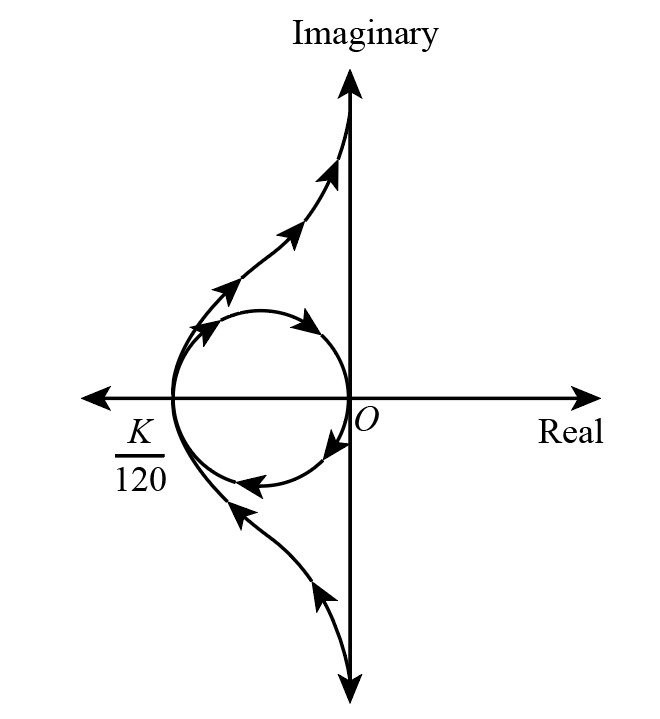For a unity feedback system where the plant is defined as K G(s) s(s +3)(s +5) a. Sketch the Nyquist Counter path and Nyquist diagram. Clearly show the real and imag- inary axis intercept points and the low and high frequency asymptotes. b. Using the Nyquist criterion, obtain the range of K in which the system can be stable, unstable, and also find the value of gain K for marginal stability. c. Calculate the frequency of oscillation for marginal stability.
For a unity feedback system where the plant is defined as K G(s) s(s +3)(s +5) a. Sketch the Nyquist Counter path and Nyquist diagram. Clearly show the real and imag- inary axis intercept points and the low and high frequency asymptotes. b. Using the Nyquist criterion, obtain the range of K in which the system can be stable, unstable, and also find the value of gain K for marginal stability. c. Calculate the frequency of oscillation for marginal stability.
Introductory Circuit Analysis (13th Edition)
13th Edition
ISBN:9780133923605
Author:Robert L. Boylestad
Publisher:Robert L. Boylestad
Chapter1: Introduction
Section: Chapter Questions
Problem 1P: Visit your local library (at school or home) and describe the extent to which it provides literature...
Related questions
Question
I need to answer of this Control System Question

Transcribed Image Text:For a unity feedback system where the plant is defined as
K
G(s)
s(s +3)(s +5)
a. Sketch the Nyquist Counter path and Nyquist diagram. Clearly show the real and imag-
inary axis intercept points and the low and high frequency asymptotes.
b. Using the Nyquist criterion, obtain the range of K in which the system can be stable,
unstable, and also find the value of gain K for marginal stability.
c. Calculate the frequency of oscillation for marginal stability.
Expert Solution
Step 1
Given data :
Step 2
(a). Condition for phase cross over frequency,
Given transfer function convert in frequency domain,
So phase cross over frequency is
Now calculation for magnitude,
Putting values in the above expression,
Hence Nyquist counter path and diagram is shown below,

Step by step
Solved in 4 steps with 1 images

Knowledge Booster
Learn more about
Need a deep-dive on the concept behind this application? Look no further. Learn more about this topic, electrical-engineering and related others by exploring similar questions and additional content below.Recommended textbooks for you

Introductory Circuit Analysis (13th Edition)
Electrical Engineering
ISBN:
9780133923605
Author:
Robert L. Boylestad
Publisher:
PEARSON

Delmar's Standard Textbook Of Electricity
Electrical Engineering
ISBN:
9781337900348
Author:
Stephen L. Herman
Publisher:
Cengage Learning

Programmable Logic Controllers
Electrical Engineering
ISBN:
9780073373843
Author:
Frank D. Petruzella
Publisher:
McGraw-Hill Education

Introductory Circuit Analysis (13th Edition)
Electrical Engineering
ISBN:
9780133923605
Author:
Robert L. Boylestad
Publisher:
PEARSON

Delmar's Standard Textbook Of Electricity
Electrical Engineering
ISBN:
9781337900348
Author:
Stephen L. Herman
Publisher:
Cengage Learning

Programmable Logic Controllers
Electrical Engineering
ISBN:
9780073373843
Author:
Frank D. Petruzella
Publisher:
McGraw-Hill Education

Fundamentals of Electric Circuits
Electrical Engineering
ISBN:
9780078028229
Author:
Charles K Alexander, Matthew Sadiku
Publisher:
McGraw-Hill Education

Electric Circuits. (11th Edition)
Electrical Engineering
ISBN:
9780134746968
Author:
James W. Nilsson, Susan Riedel
Publisher:
PEARSON

Engineering Electromagnetics
Electrical Engineering
ISBN:
9780078028151
Author:
Hayt, William H. (william Hart), Jr, BUCK, John A.
Publisher:
Mcgraw-hill Education,